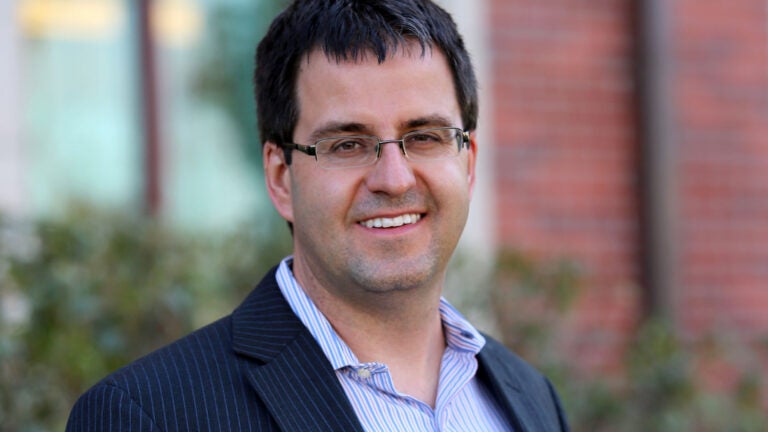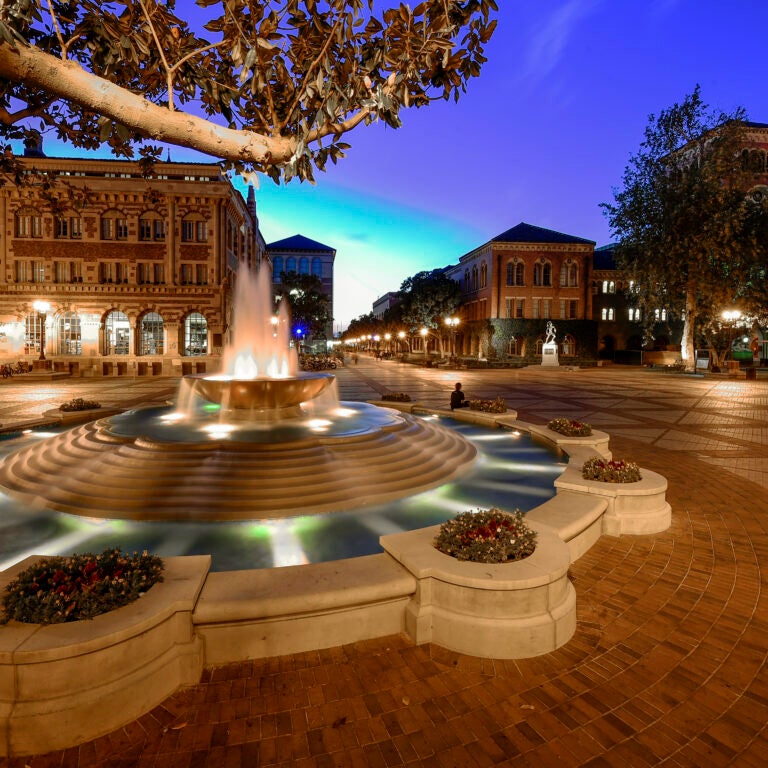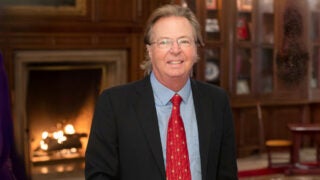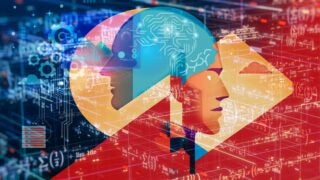
Remo Rohs is chairman of the USC Dornsife computational biology section and a USC Viterbi computer science professor. (Photo/Matt Meindl)
Meet the professor who uses computer science to help cure cancer
Inspired by his father’s fight against non-Hodgkin’s lymphoma, Remo Rohs leads USC’s efforts in studying the molecular nature of cancer.
To cure cancer and other diseases, scientists must process vast quantities of information about the human body and make it useful to physicians. Remo Rohs is a linchpin in that effort; he’s the section head of quantitative and computational biology and a professor of biological sciences, chemistry, and physics & astronomy at the USC Dornsife College of Letters, Arts and Sciences and a professor of computer science at the USC Viterbi School of Engineering. His father’s fight against non-Hodgkin’s lymphoma motivates Rohs in his work with the USC Michelson Center for Convergent Bioscience. Rohs spoke with USC News about his work to help cure cancer and his latest research.
What happened to your father?
Remo Rohs: When he was diagnosed with cancer in 2012, the doctors soon gave up. They said he was too far gone and that he couldn’t withstand chemotherapy because he had only one kidney from a previous cancer. I flew to Berlin right away; my dad had lost half his weight and was in poor condition. I told the doctor, “My father is a strong man, go ahead and administer the chemo anyway.” Otherwise, he would die. They did so, and my dad survived. Today, he’s 85 years old and can see his grandchildren. My dad says I saved his life.
How did the experience affect your work?
RR: It definitely affected my life and career. I’ve worked on a project on non-Hodgkin’s lymphoma. It is my calling to study the molecular nature of the disease. I wanted to be a medical doctor, but I became a scientist because research establishes the foundational knowledge that will enable doctors to heal many people.
What is computational biology?
RR: It is 21st-century biology. Biology generates lots of data about genome sequences, cells, molecules and more. It’s impossible to analyze this without quantitative and computational skills, which involve the development of algorithms and models.
Why did you come to USC?
RR: USC had the world’s first computational biology program. I studied in Germany, Israel and New York and came here in 2010 because I could be an independent scholar at USC. I wanted to be in a department with like-minded people, developing and using computational methods to study biology. Later, the Michelson Center for Convergent Bioscience was launched, making it a great fit.
What new research are you working on?
RR: We recently completed a study that shows how the protein MEF2B (myocyte enhancer factor-2B) binds to DNA. It’s similar to how a train sits on a rail. If it doesn’t fit right, it causes problems in the cell, which leads to disease. Previously, we didn’t fully understand the gene regulatory mechanisms of this protein and how cancer mutations change its DNA binding abilities. It’s an example of genome sequencing combined with machine learning to advance biology. And mutations for this gene are linked to non-Hodgkin’s B-cell lymphoma — the same disease that nearly claimed my dad.



